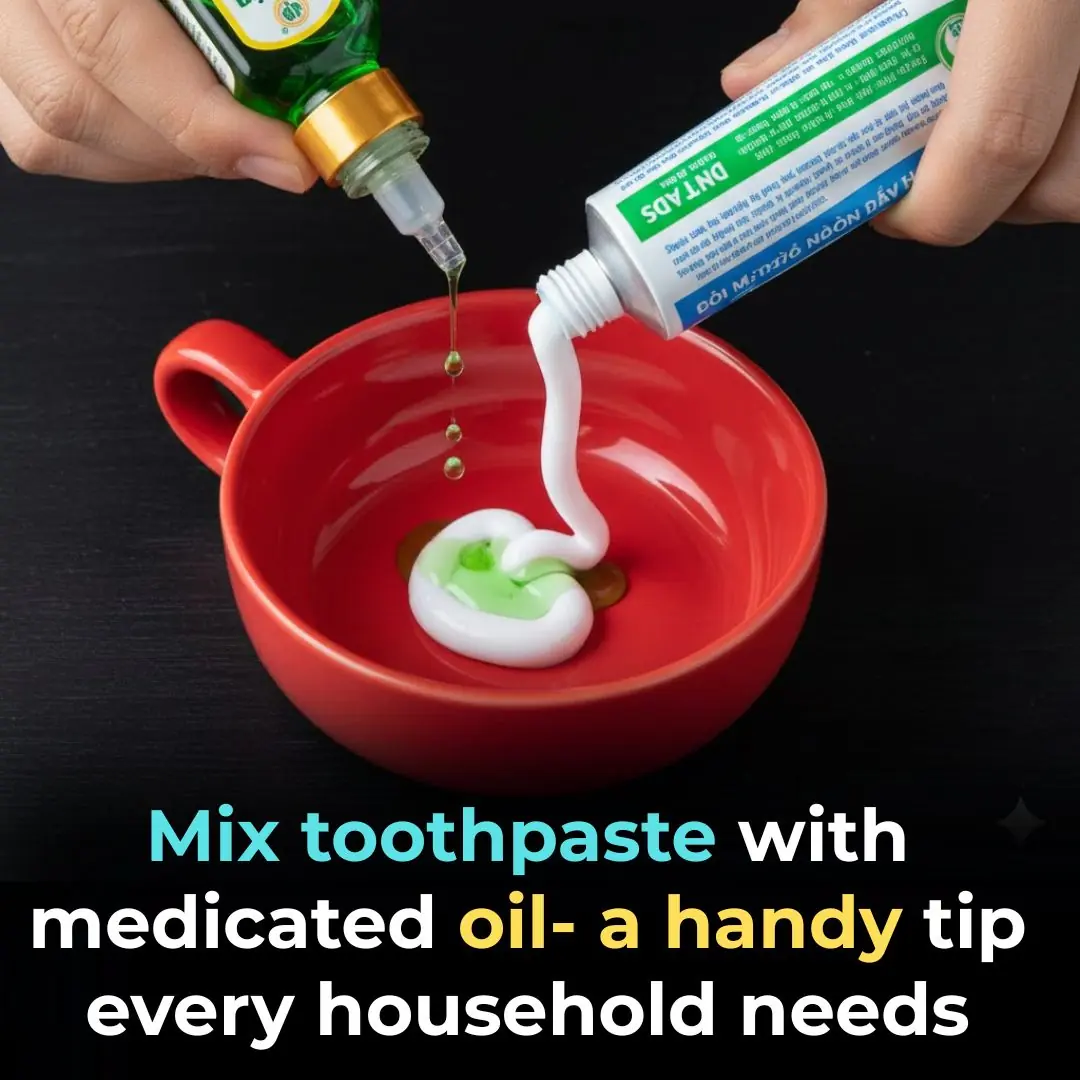
Save Hundreds on Electricity Bills Every Year by Cleaning This Hidden Part of Your Rice Cooker
Rice cookers are a staple in almost every Asian household — simple, reliable, and indispensable. Yet few people realize that one small, often-overlooked component inside the cooker can dramatically affect its efficiency, cooking time, and even power consumption.
That part is called the heating plate (or heating element) — the metal disc located at the base of your cooker, directly beneath the inner pot.
If this surface becomes coated with rice residue, oil, or dust, it can block heat transfer, causing the cooker to use more electricity and take longer to cook. Over time, this also shortens the appliance’s lifespan and makes rice unevenly cooked or even scorched at the bottom.
⚡ Why Cleaning the Heating Plate Saves Energy
According to Energy Star (2023), household appliances that operate with poor heat conduction — even just a thin layer of debris — can waste up to 15–20% more energy.
In rice cookers, that waste adds up fast:
-
Heat must pass through the debris before reaching the inner pot.
-
Sensors may misread the temperature, causing the device to overheat or extend cooking time.
-
The bottom of the rice may burn while the top stays undercooked.
Maintaining the heating plate clean not only improves energy efficiency but also ensures that your rice cooks faster, fluffier, and more evenly — while extending the life of your cooker by several years.
🧽 How to Clean the Heating Plate Properly
🪄 You’ll Need:
-
White vinegar (natural disinfectant and degreaser)
-
A soft sponge or non-abrasive cloth
-
A damp towel or wet wipes
-
A dry paper towel or microfiber cloth
🔹 Step 1: Unplug and Cool Down
Always disconnect the rice cooker and wait until it is completely cool before cleaning. Safety first — never clean while plugged in.
🔹 Step 2: Wipe Away Loose Debris
Use a dry cloth to remove any crumbs or dust inside the cooker bowl. If you see hardened rice grains or stains, gently scrape them off with a soft silicone or wooden utensil (avoid metal).
🔹 Step 3: Apply Vinegar Solution
Pour a small amount of white vinegar onto the sponge’s rough side. Gently wipe the heating plate in circular motions to dissolve stains, food residue, and mineral buildup.
Panasonic Home Appliances (2024) recommends white vinegar because it safely removes starch and calcium without damaging the nonstick coating or metal surface.
🔹 Step 4: Let It Sit for 10–15 Minutes
After wiping, lightly dampen the surface again with vinegar and let it rest for 10–15 minutes. This helps neutralize stubborn stains and deodorize any burnt smell.
🔹 Step 5: Wipe Clean with a Damp Cloth
Use a wet wipe or soft towel to remove any remaining vinegar and grime. If stains persist, repeat the process once more.
🔹 Step 6: Dry Completely
Finally, use a dry paper towel or microfiber cloth to wipe the surface dry. Make sure no moisture remains, as leftover water can corrode electrical components or trigger safety sensors.
✨ The Result
After cleaning, you’ll notice the heating plate shines again — smooth, reflective, and free from sticky marks.
➡️ Benefits of regular maintenance:
✅ Cook rice faster (reduce cooking time by up to 15%)
✅ Save 10–20% on electricity usage annually
✅ Improve rice flavor and texture
✅ Extend your rice cooker’s lifespan by 2–3 years
Samsung Energy Lab (2022) estimates that keeping heating appliances clean and dry can reduce overall household power consumption by up to 12% per year.
🧠 Pro Tips from Appliance Experts
-
Clean the heating plate once a week if you use the rice cooker daily.
-
Never immerse the cooker base in water. Only the inner pot is washable.
-
Check the contact spring (the small round button at the center) — if it’s stuck, gently press it to ensure it moves freely; this helps maintain even heat distribution.
-
Avoid abrasive cleaners or steel wool, which can scratch the surface and damage sensors.
💡 Bonus: How to Prevent Build-Up in the Future
-
Always wipe the bottom of the inner pot dry before placing it into the cooker. Moisture trapped between the pot and plate causes stains and uneven heating.
-
Don’t overfill — starch overflow leaves sticky residue on the heating plate.
-
Leave the lid open for 10 minutes after cooking to let steam evaporate before cleaning.
News in the same category


7 Foods That Can Last for Years — Even “Past Expiration” Dates

Can Lemon Seeds Help with Snake Bites? Experts Explain the Truth — and Safe First-Aid Steps You Should Know

Reverse Premature Gray Hair Naturally: The Simple Starfruit & Potato Peel Remedy That Works Like Magic

The 4 Golden Hours to Drink Coffee for Maximum Health Benefits — Cleanse Your Liver, Boost Digestion, and Stay Energized

‘Start Talking Like This, They Lost Their Hunger ‘: Bills Fans Panic. Slumping Josh Allen Says Wife Hailee Steinfeld Taught Him He’s More Than A NFL Player

Husband Sings Passionate Rendition of Al Green’s Let’s Stay Together for Wife’s Birthday

Cordae Fulfills Mom’s Lifelong Dream Of Becoming a Singer by Inviting Her to Join Him on Tiny Desk

NBA Star Jayson Tatum Invests $2M in Homeownership Initiative for Families in Hometown of St .Louis

14-Year-Old Designed and Made Big Sister’s Prom Dress

13 Year Old Becomes One of the Youngest Students Accepted to Morehouse, Breaking Record Set by Dr. King in 1944

Celebrating Dr. Johnnetta Cole, the First Black Woman President of Spelman College

10 Foods That Help Reverse Fatty Liver Disease — Dietitians Recommend Adding Them to Your Daily Menu

How to Perform First Aid for Stroke at Home — The Right Way to Save a Life

The Secret Trick Rice Weevils Fear Most — Add a Bit of “This” and Keep Your Rice Fresh All Year

Mix Toothpaste with Essential Balm Oil — The Viral Home Hack Everyone’s Talking About

Major airline cuts 800,000 seats as it scraps 24 flight routes

Top army general makes shocking admission about how he's using ChatGPT

Good News for Coffee Lovers: 6 Proven Benefits of Drinking Coffee in the Morning
News Post

The Last Parade: Tikiri’s Story.

The Man Who Saved the Drowning Bear.

Spots of Joy: The Horse, the Pony, and the Dog Who Became Family.

The $5 Dream: How a Thrift Store Goose Became a Symbol of the American Dream.

Garlic and Rosemary: A Natural Remedy for Joint Pain in Knees, Hips, and Hands

1 Powerful Mineral to Stop Sciatica & Relieve Nerve Pain

70-Pound Female Bear Rescued After Spending 12 Days with Her Head Trapped in a Jar.

The Last Push: A Leatherback’s Fight for Life.

Top 10 Foods to Improve Circulation in Legs and Feet

Students Raise $20,000 to Buy Beloved School Custodian His Dream Car — A Jeep Wrangler.

Man Gets a Face Full of Octopus — and a Lifetime Ban

Monkeys Crown Panda as Their King — The Great Bamboo Forest Mystery

Grayson – A Story of Strength and Courage in 48 Hours

Evelyn Grace Jackson: A Tiny Warrior’s Legacy of Courage and Love

The Man Who Lives Among Lions: Armand Gerber’s Extraordinary Bond With the Wild.

A Father’s Homecoming That Broke Every Rule but Captured Every Heart.

A Real-Life “Lion King” Moment That Captured the World’s Heart.

6 Warning Signs of a Clogged Artery Most People Ignore (Cardiologist Alert)

How to Wash and Condition Your Hair with Beer to Reduce Hair Loss and Stimulate Continuous Hair Growth
